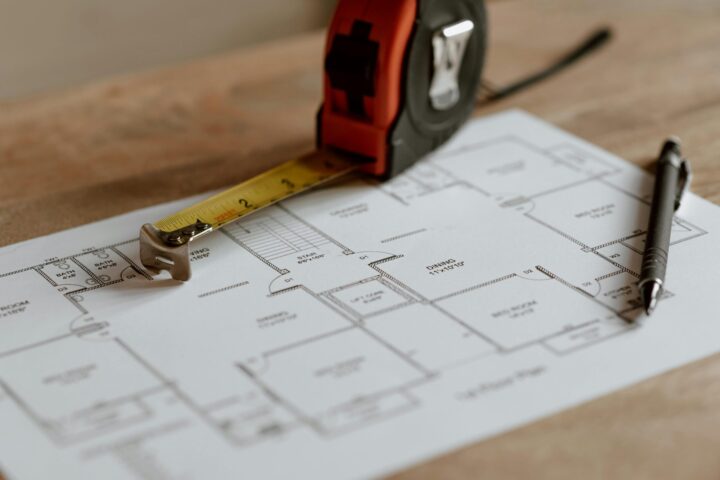The following contribution is from another author.
It is often said that owning your primary residence is only a sound financial investment if you plan on living in it for more than 5 years. Unfortunately, day-to-day living needs tend to operate on a much shorter time frame, making what was sufficient yesterday no longer adequate today.
While there is no way to predict what life throws at us, it is entirely possible to design “future proof” homes that can adapt to emergent needs. From open floor plans to energy efficient buildings, keep reading as we explore some design tactics to accommodate changing lifestyles.
Prioritize Versatility
Life has a way of coming at you fast. Job changes, health scares, family additions, etc. are just a few of the many factors that can change homeownership needs at the drop of a hat.
Therefore, designing versatile spaces that can evolve with life’s changes is essential. Opt for open interiors that can be quickly reconfigured without requiring a full scale renovation. Plan for acoustics, such as soundproof doors and sound-absorbing wall panels, to promote tranquility as the home gets busier. Choose sliding pocket doors between adjacent rooms to maximize space when the rooms need to be utilized simultaneously.
Optimal Safety
Multigenerational living is on the uptick. Given the challenges of elderly care and childcare, many families are making the decision to keep the generations under a single roof.
As such, it is essential to build with the safety of everyone from toddlers to grandparents in mind. Have an elite railing infrastructure around staircases and lofts. Choose rounded countertops to limit the impact of a fall or head bump. Apply a non-slip coating to all hard flooring surfaces.
Enhanced Durability
Modern life is busier than ever. Most homes are multi-income. People have to work side hustle(s) to make ends meet. An important work email is just a click away, making work/life balance increasingly challenging.
All of this adds up to homeowners having less and less time to commit to routine home care and maintenance. There simply aren’t enough hours in the day or days in the week to shampoo the carpets, seal the marble, and stain the decking as often as you should.
Therefore, building for durability is a top priority in modern design. Engineered quartz countertops are fabricated from mineral quartz held in place with an epoxy resin for a solid, one-piece design that does not require sealing.
Innovative fiber cement siding is manufactured from a combination of sand, cellulose fibers, and Portland cement to provide elite moisture and UV resistance without the need for painting. Aluminum window frames keep window-to-wall transitions airtight in the face of weather exposure and do not require staining to prevent cracking and warping.
Energy Efficiency
Home design trends come and go. What was fashionable in our parent’s generation feels tacky and outdated by today’s standards.
However, one trend that is a lock to intensify over the years is the need for energy efficient homes. With humanity looking for ways to slow and eventually reverse the debilitating effects of climate change, the modern real estate market wants to be a part of the solution. Energy efficient homes also have the added benefit of helping homeowners save on utility bills, creating a win/win scenario for energy-efficient design.
Solar technology is a logical place to start. Roof panels and PV window glazing can help turn the sun’s energy into renewable electricity to power the home. Use modern insulation tools and source sustainable insulation materials like hemp, recycled denim, and sheep’s wool.
In addition to elite R-value, these types of products are much less toxic and have lower embodied energy than most traditional types of batt or blown-in insulation. Innovative low-E windows have unique thermal properties, allowing natural light transmission into the home while limiting excessive heating. This permits daylighting in all seasons without overreliance on air conditioning.
Modern Rustics
Despite advances in design and material fabrication processes, homeowners inevitably have a yearning for rustics, namely wood and stone. There is just something about these age-old materials that speaks to the sense of home no matter how high-tech our lives become.
The problem is that they require assiduous attention to detail to maintain their aesthetic and protective properties.
The good news is that there are many modern materials that closely resemble these timeless classics, only with few of the upkeep requirements. The aforementioned fiber cement, steel log, and synthetic wood are some great cladding options for a rustic design exterior. Luxury vinyl tile flooring can be manufactured to closely resemble solid hardwood without the need for sealing. Composite roofing can be designed to mimic concrete tiles, wood shakes, or any number of traditional roofing materials, all while providing top-notch fire and impact resistance.
Future Proof Your Home with Next-Level Materials and Design
When designing a home, it is crucial to consider that your spatial needs may change at any moment. From versatile, open interiors to contemporary rustic materials, consider any of the ideas listed above to create a home capable of adapting to changing lifestyles. For more of the latest trends in the rapidly-evolving smart home landscape, explore the resources at At Home in the Future for ideas and inspiration today!
















